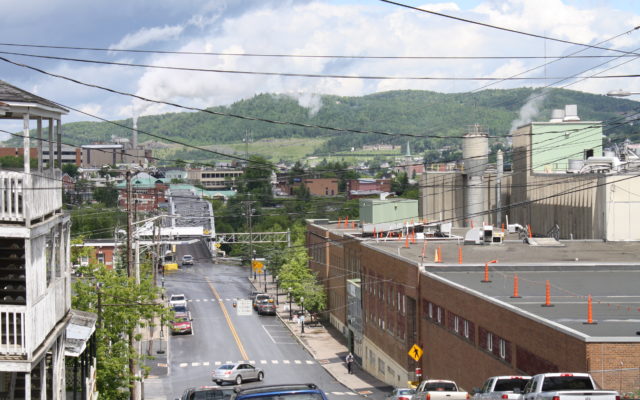
Maine’s polarized political shift may survive the Trump era
By Jessica Piper, Bangor Daily News Staff
Most of the Maine towns that flipped to President Donald Trump in 2016 stayed with the Republican incumbent this year, suggesting a continued political realignment even as President-elect Joe Biden, a Democrat, performed well here and nationally.
The political divide at the presidential level has grown as a smattering of small towns in northern and eastern Maine — including some that were Democratic strongholds just a decade ago — have trended conservative while coastal areas have become more liberal. Inland towns in central and southern Maine generally remain a battleground.
The movement is not entirely unique to the outgoing Republican president — Maine’s two congressional districts have been moving further apart in presidential elections since the 1990s. But this year saw the widest gap between the two since Maine began splitting its electoral votes in 1972. With a few notable exceptions, the shift at the presidential level was mirrored in down-ballot races, suggesting the partisan trend could persist after Trump’s presidency as part of a long-noticed political and cultural divide known as the “two Maines.”
Trump lost ground in Maine relative to four years ago, with his margin in the 2nd Congressional District narrowing by 3 percentage points in 2020. But the results were not uniform — the Republican president improved margins in more than 170 towns, according to unofficial results. Of the nearly 200 cities and towns that favored Trump in 2016 after backing former President Barack Obama four years earlier, the president won at least 85 percent a second time.
Trump’s improved performance over the past four years came almost exclusively in small inland towns, with Presque Isle the largest city to shift right. Obama won it by 8 percentage points in 2012, but Trump won it by 7 points in 2016 and increased his margin again this year.
The ancestrally Democratic St. John Valley also moved further toward Trump, including Madawaska, which Obama won by 48 points in 2012. Democratic presidential nominee Hillary Clinton won by only 15 points four years ago, and Biden took it by just 9.6 points.
Trump’s gains in rural parts of Maine fit with patterns seen across the country, said Jim Melcher, a political science professor at the University of Maine at Farmington.
“Donald Trump did relatively well in those places where he did well four years ago,” Melcher said. “Where he lost votes generally did tend to be more suburban and urban areas.”
Although Trump’s margin of victory in the 2nd District this year was smaller than in 2016, Biden’s gains in the district came mostly from Democratic-leaning cities and towns. The former vice president outperformed Clinton by double digits in Orono and Belfast while flipping Auburn, an historically Democratic city that Trump won by just 29 votes four years ago.
Biden saw similar gains in southern Maine, including coastal towns and the wealthy Portland suburbs. For example, Obama won the town of Falmouth by 11 percentage points in 2012. It favored Clinton by 27 points four years ago and Biden by 38 points this year.
The shifts in the presidential contest were reflected in most, but not all, down-ballot races. Sen. Susan Collins, R-Maine, won decisively, outperforming Trump across the state, though she fell short of winning all 16 counties as she did in 2014, with her Democratic challenger Sara Gideon taking Knox and Cumberland counties, two Democratic-leaning coastal counties.
U.S. Rep. Jared Golden, a Democrat from the 2nd District, was re-elected by a solid margin, outperforming Biden in all but two of the district’s more than 330 towns. More than 70 towns went for both Golden and Trump. In Rumford, a former Democratic stronghold that Obama won by 28 points in 2012, Trump won by 8 percentage points while Golden won by nearly 11 — a solid margin but well short of the kind of victory that Democrats used to rack up in the town.
All but three of Maine’s 35 state Senate districts saw their state-level races won by the same party that won the presidential race in that district. Two of those races — the seats held by Sens. Ned Claxton, D-Auburn, and Scott Cyrway, R-Benton — had presidential races decided by less than 2 percentage points.
The only district to see a large deviation was the Aroostook County district represented by Sen. Troy Jackson, D-Allagash. The incumbent Democrat won reelection easily despite Trump also winning his district by 11 points. The other senate district in the County flipped back to a Republican for the first time since 2014. Trump won that district by 26 points.